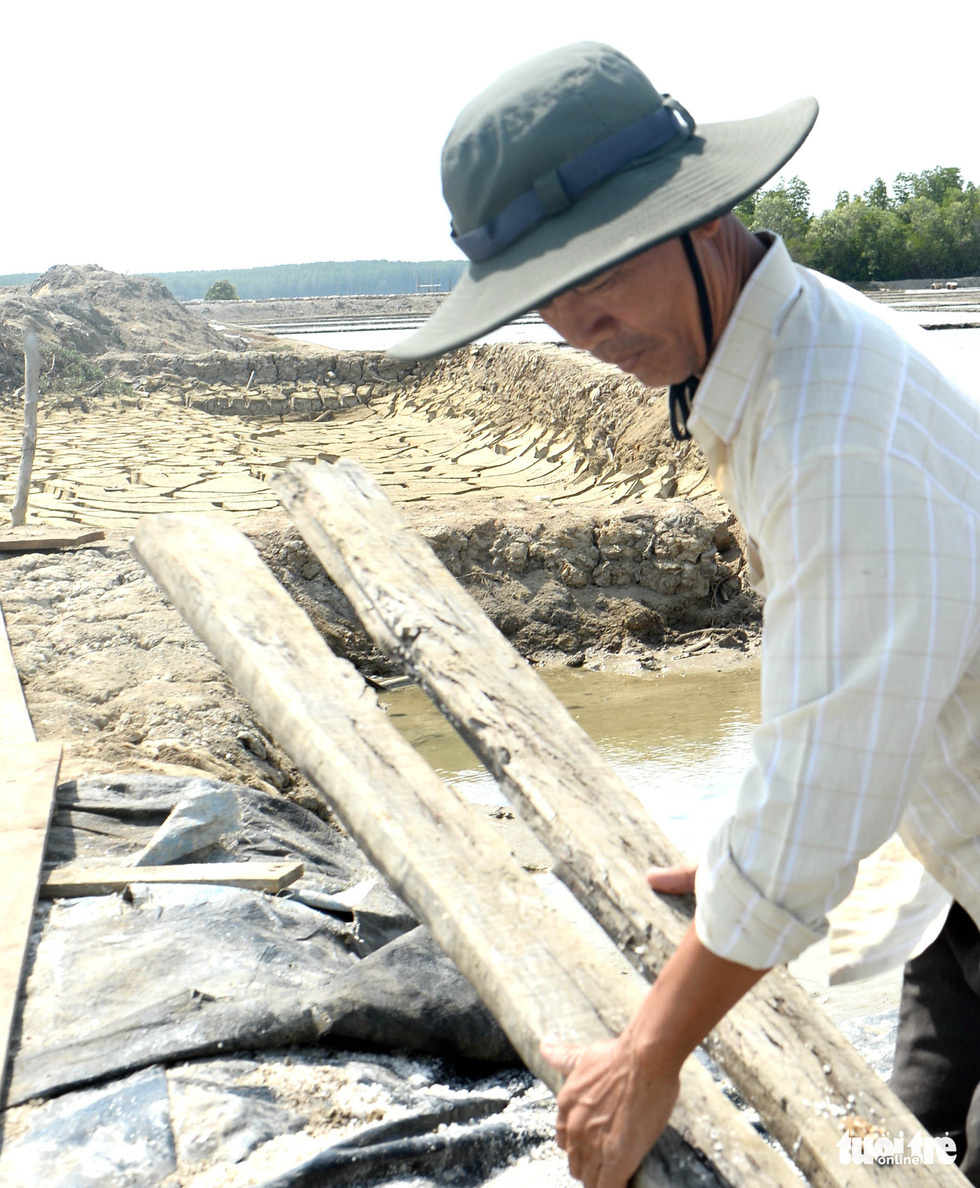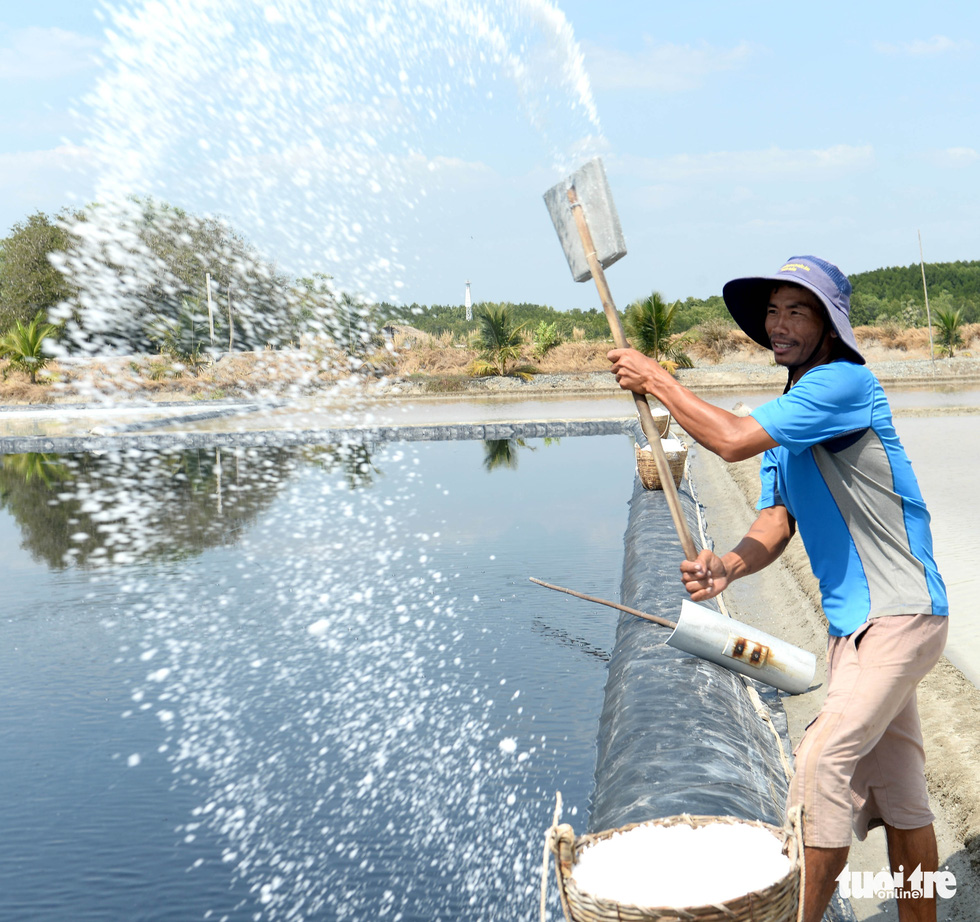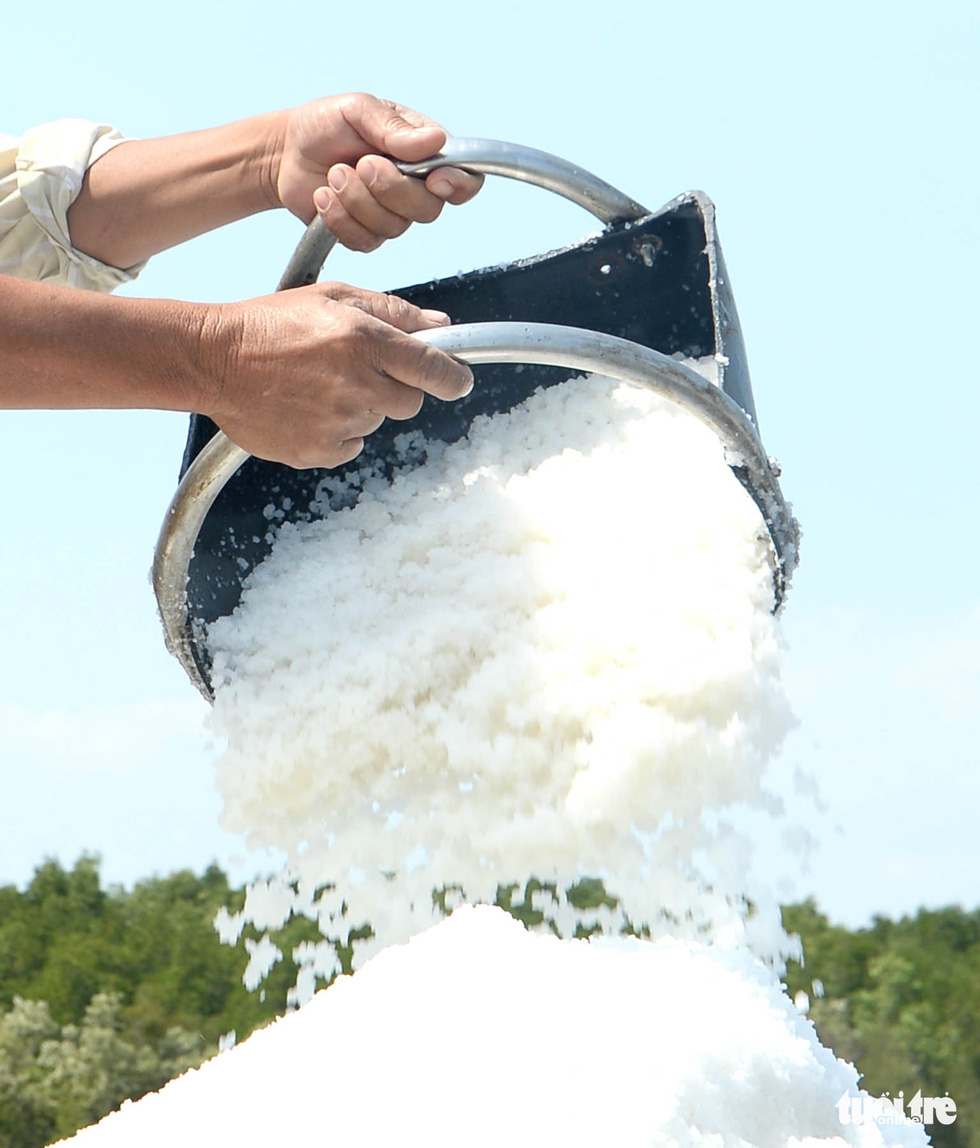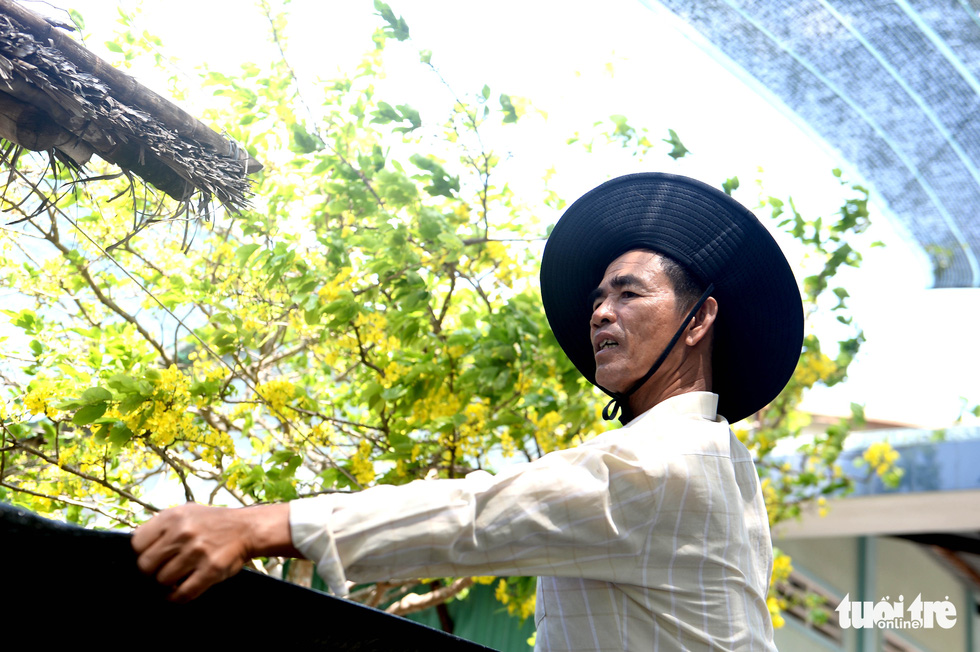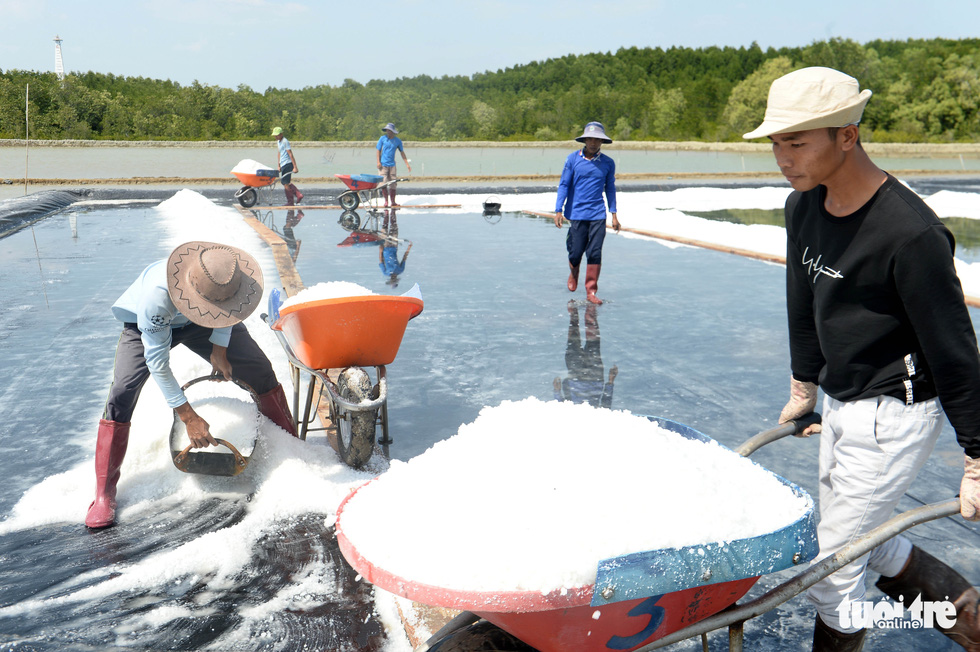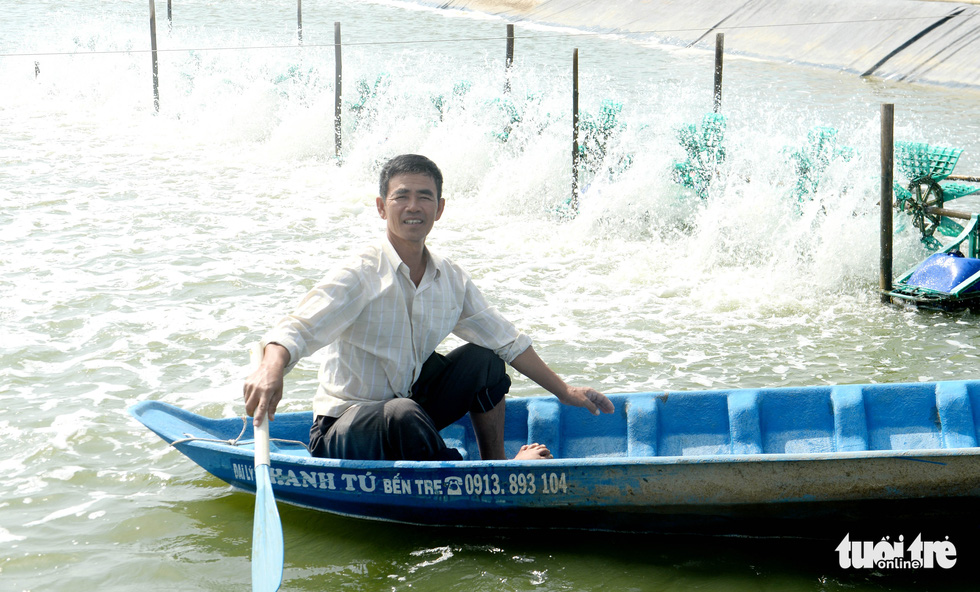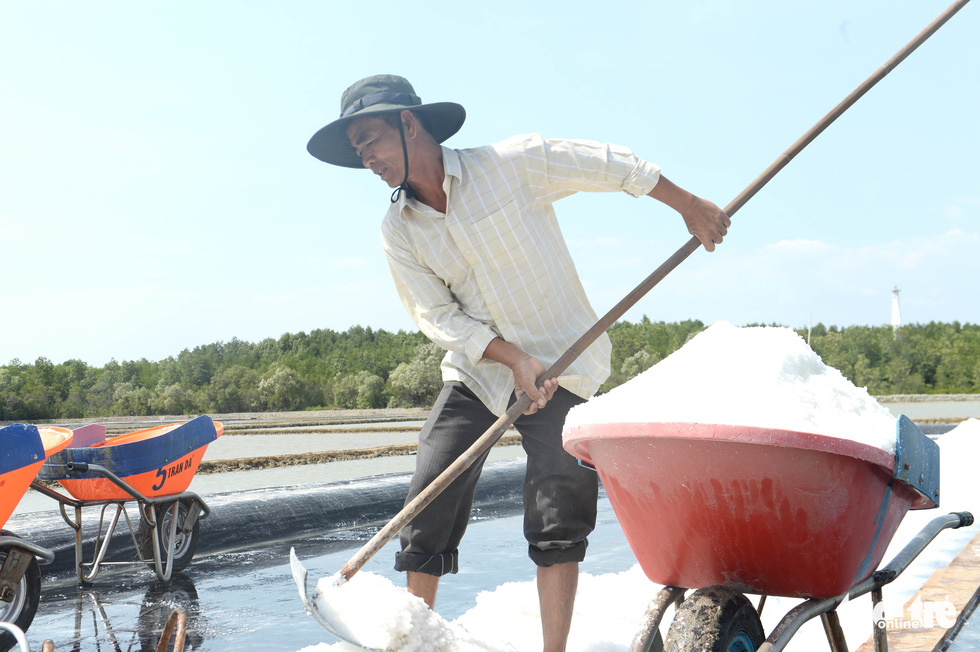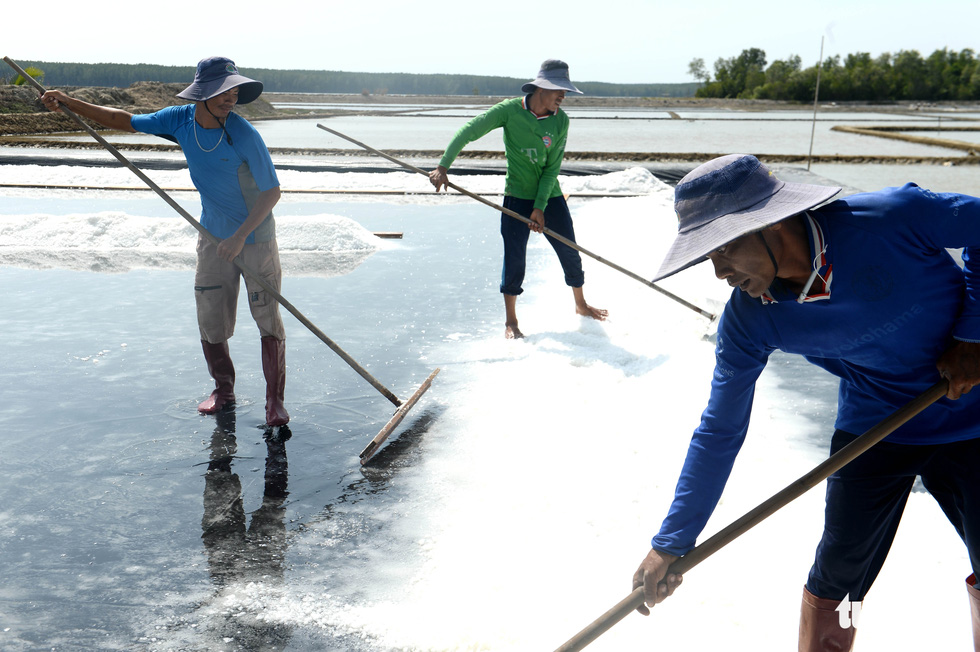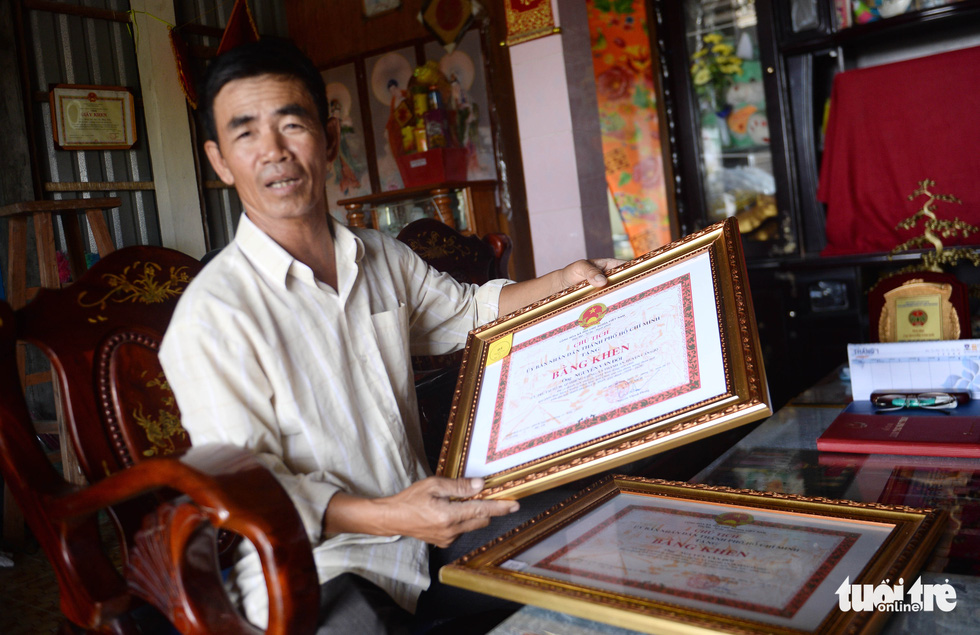Over the last ten years, Nguyen Van Doi, a salter in Thieng Lieng Commune, Thanh An Ward, Can Gio District, Ho Chi Minh City, has become a pioneer in local salting circles thanks to his modern take on the old school trade.
Doi’s decision to modernize his five-hectare salting field was made amidst his longstanding disappointment in the high costs and low productivity that result from traditional salting techniques.
Traditionally, salt is made by storing seawater in salterns – large pools – and allowing the sun to evaporate the water, leaving salt behind.
|
|
| For the best results, water is collected in the salterns during extremely hot weather in order to accelerate crystallization. Photo: Tu Trung / Tuoi Tre |
The modern technique Doi now uses involves placing plastic mats on top of the sand at the bottom of his salterns, a method which allows him to boost both productivity and quality.
Doi’s success using the new method has enabled him to employ dozens of individuals from the local community, while supporting low-income households by helping them learn effective salt-farming techniques and impoverished individuals in setting up their own businesses.
The incredible impact Doi has made on the community has led locals to award him the nickname 'The King of Salters.'
“I apply the new technology to make more effective salterns and irrigation,” Doi told Tuoi Tre (Youth) newspaper.
|
|
| Crystalized salt appears clean and comes out in great quantity thanks to effective technology. Photo: Tu Trung / Tuoi Tre |
“More importantly, I make sure I am producing salt at the right time, when the weather is extremely hot and the salinity level in the sea is well balanced.
“These conditions help with rapid crystallization and increased productivity.”
Crystalized salt sells for VND2,500-3,500 (US$0.1-0.14) per kilogram, 2-3 times higher than traditionally produced salt.
Doi’s modern crystallization techniques allow him to produce 90-100 metric tons every hectare.
“In the months before the peak salting season, I use my salterns to raise tiger prawns,” Doi said.
“I do my best to make sure my 6,000-square-meter field is always generating my income.”
|
|
| Nguyen Van Doi puts a plastic mat on top of sand inside a saltern. |
|
|
| Bright salt crystals produced from plastic covered salterns are worth more than traditionally produced salt. |
|
|
| Nguyen Van Doi spends his days supervising the salterns, checking their contents and the salinity level of seawater. |
|
|
| The so-called 'King of Salters' harvests salt from plastic mats. |
|
|
| Many local people have switched to producing salt using Nguyen Van Doi’s more productive method. |
|
|
| Nguyen Van Doi proudly shares certificates of merit from the Ho Chi Minh City People’s Committee. |
Like us on Facebook or follow us on Twitter to get the latest news about Vietnam!



